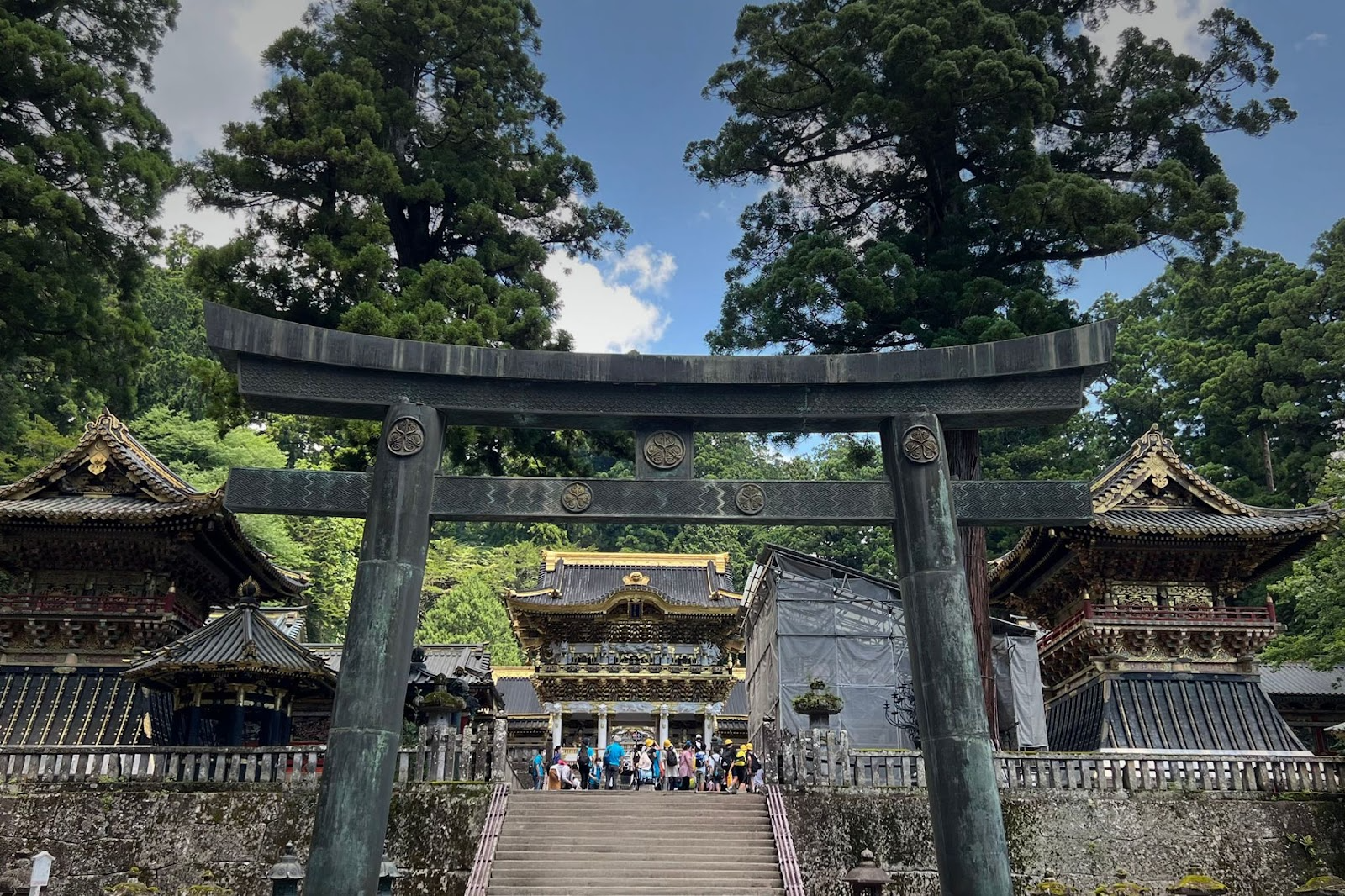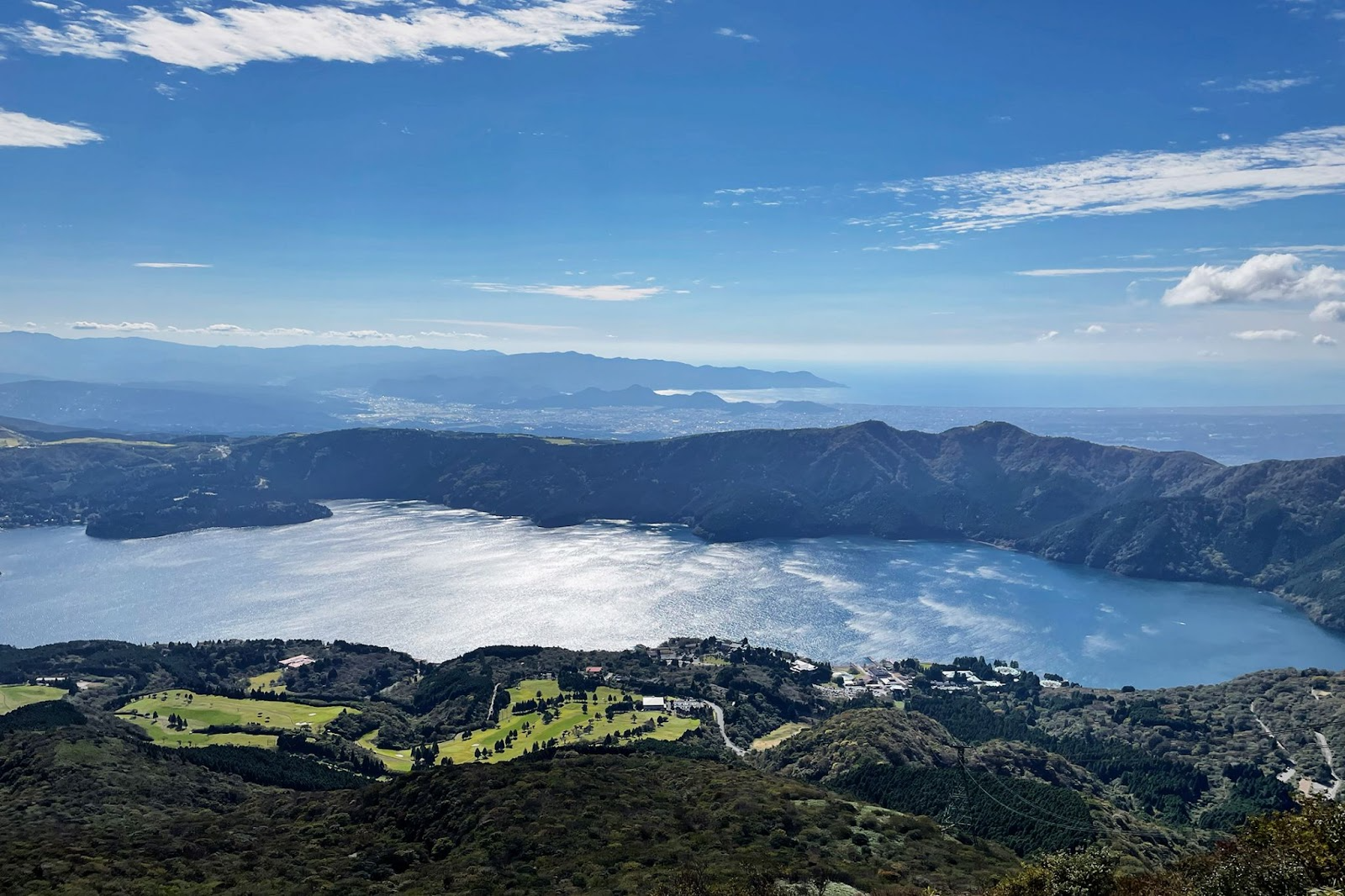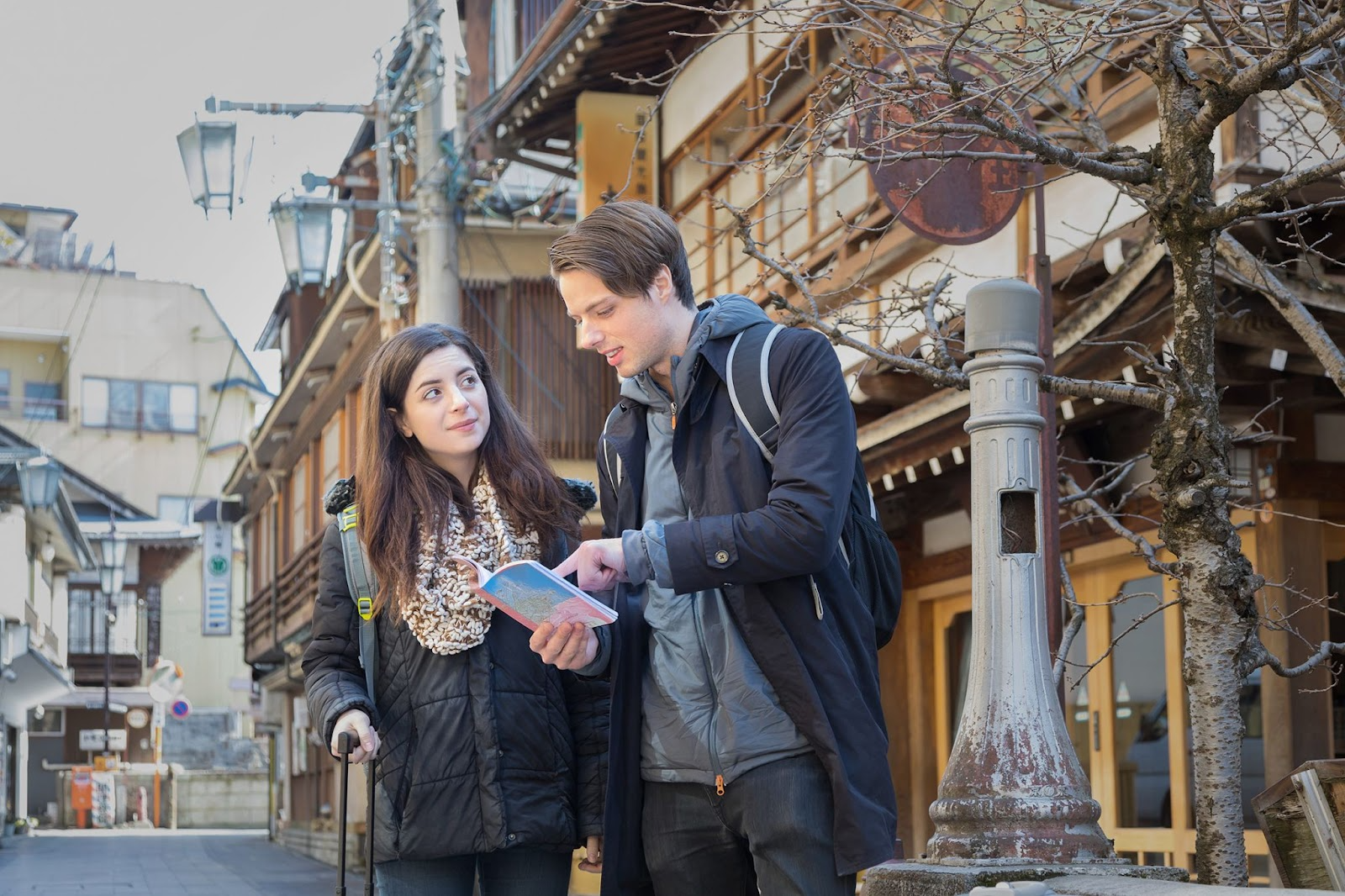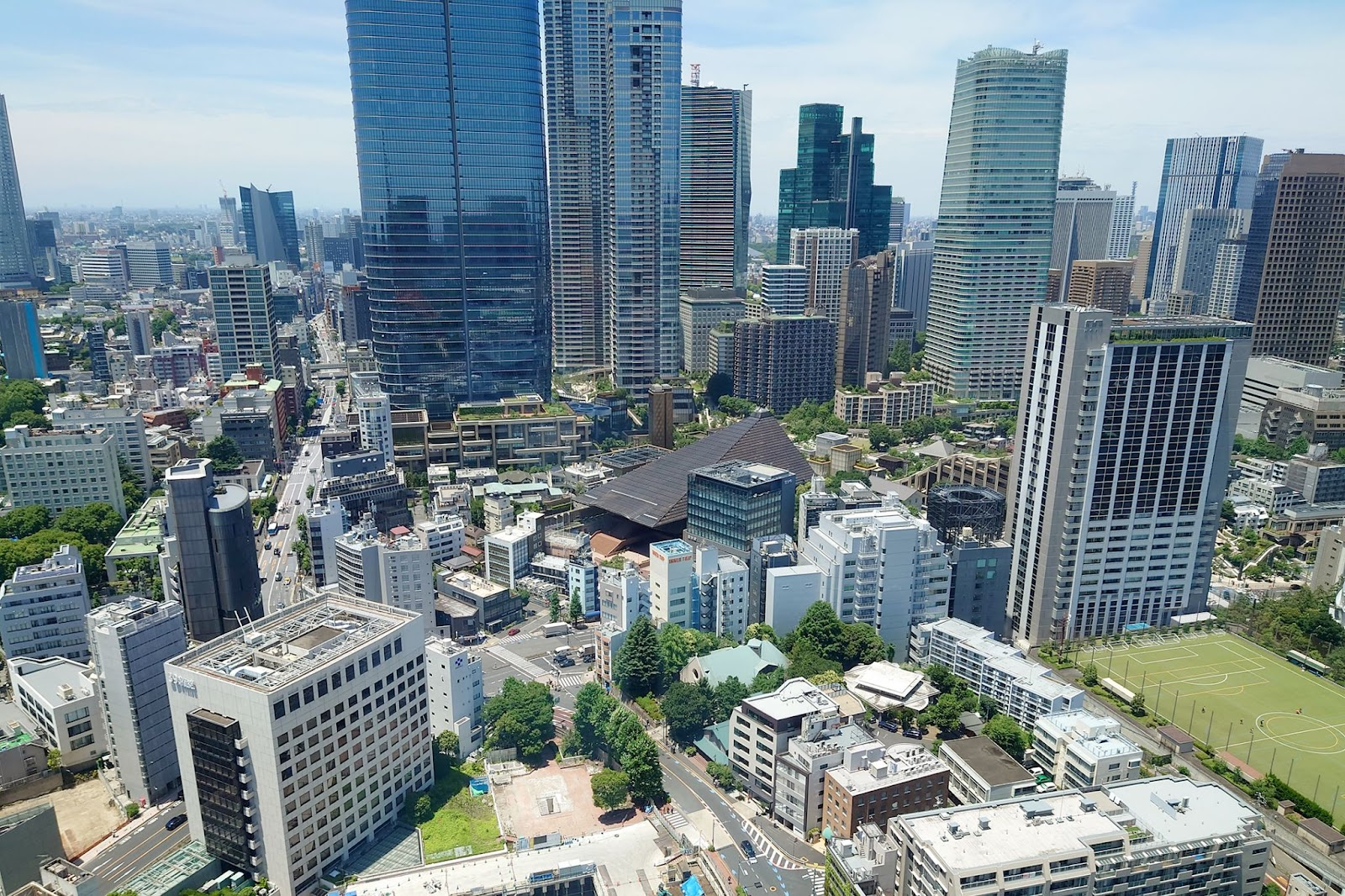Just a few hours from Tokyo, you arrive in Nikko—a restorative haven where grand landscapes embrace the UNESCO World Heritage “Shrines and Temples of Nikko.” The milky-white hot springs that have charmed travelers for centuries and the sacred air of temple–shrine precincts framed by stately cedar avenues gently bring your body and mind back into harmony when everyday life leaves them unsettled. For first‑time planners searching “nikko onsen,” this guide orients you to the area’s best wellness experiences without the overwhelm.
In recent years, as interest in sustainability and well‑being has grown, the word totonou—“coming into alignment”—has become a buzzword for the integrated calm you feel in an onsen or sauna. Nikko, where time‑honored culture meets contemporary wellness, is the perfect stage for a luxurious journey that is kind to your body and gentle on the environment.
In this guide, you’ll find everything from a concise explanation of premium spring qualities and storied inns to mindful activities immersed in nature, organic dining, and even simple self‑care practices that continue long after you return home—plenty of high‑value ideas that will delight discerning women travelers.
Step into dappled forest light and breathe deeply, warm your circulation in the baths, and open your senses to reset body and mind—your blissful wellness journey to “get aligned” in Nikko Onsen starts now.
The Allure of Nikko Onsen and a Complete Guide to Spring Qualities
For centuries Nikko has been praised—“Don’t say ‘magnificent’ until you’ve seen Nikko”—and its hot springs nestled among sacred peaks are equally exceptional. The Nikko area stretches from Oku‑Nikko to Kinugawa and offers a mosaic of spring types. Among them, sulfur‑rich Oku‑Nikko Yumoto Onsen and Kinugawa Onsen, beloved for skin‑friendly waters, are two signature destinations. At nearly 1,500 meters, Oku‑Nikko stays pleasantly cool even in summer, making it a renowned mountain retreat.
By contrast, Kinugawa lines a dramatic gorge where autumn foliage glows. The best season depends on your purpose: snow‑viewing baths in winter at Yumoto, blazing leaves in fall along Kinugawa, and summer as a refreshing escape. Below, you’ll find representative water profiles for Oku‑Nikko and Kinugawa, plus the correct bathing method to help you maximize onsen benefits.

Water Profiles of Oku‑Nikko & Kinugawa
High‑elevation Oku‑Nikko Yumoto Onsen is famed for its sulfur springs. Source temperatures sit in the high range and the water is mildly acidic to neutral; when hydrogen sulfide in the water meets air and your skin, the bath turns into a signature milky‑white “cloudy” soak. Yumoto’s water is rich in metasilicic acid, widely appreciated for beautifying the skin. Sulfur springs are traditionally said to stimulate circulation, with reported comfort for concerns such as fatigue and certain skin issues.
Kinugawa Onsen, on the other hand, offers an alkaline simple spring: colorless, clear, virtually odorless, and silky on the skin. With a pH commonly in the alkaline range, these waters help lift old keratin for smooth skin—one reason they’re so popular among women travelers. With a gentle touch that’s easy on children and older adults, Kinugawa’s clear waters invite repeated, unhurried soaks.
From the striking scent and hue of sulfur springs to the silky glide and quiet comfort of alkaline waters, Nikko brings you a full palette of distinctive baths.
How to Bathe Properly to Maximize Onsen Benefits
Even the finest waters depend on how you bathe. Embrace the tried‑and‑true routine rooted in Nikko’s healing culture to receive every benefit.
Before you enter, drink a glass of water—at altitude the air is drier, so be mindful of frequent hydration. After warming your body with ladled rinse water, settle into the tub and make slow, deliberate breaths your anchor.
Because Yumoto’s sulfur springs promote perspiration, step out after about 5–10 minutes and take a short rest. Briefly cool down by exposing yourself to fresh air or rinsing lightly with cool water. This causes blood vessels to constrict so that, when you re‑enter the bath, your capillaries expand more fully and circulation improves. Alternating warm and cool in this way helps your autonomic nervous system switch gears smoothly, making it easier to relax and reducing stress.
After alternating bathing and rest two or three times, gently pat dry with a bath towel to avoid getting chilled, then take it slow. Your parasympathetic nervous system becomes dominant post‑bath; drowsiness follows and your sleep that night will likely run deeper. When you gift yourself restorative sleep along with that pleasant post‑bath fatigue, the balance you cultivated on your trip lasts longer. (General health note: if you have heart disease, uncontrolled hypertension, or other chronic conditions, avoid drastic hot–cold contrasts and follow facility guidance.)
Top 3 Recommended Nikko Onsen Stays by Stay Type
In Nikko you’ll find stays that blend tradition and polish, making it easy to design a trip around your theme and companions. Here are three curated picks across “Classic,” “Luxury,” and “Retreat.”
From a storied Western‑style grand hotel to a cutting‑edge resort cradled by forest, and a Japanese inn steeped in local craft, each property embodies a character only Nikko can offer—complete with distinctive bathing: a cypress‑scented tub redolent of history, open‑air springs overlooking Lake Chuzenji drawn from Yumoto, and bathhouses accented by folk craft with gentle, toji‑inspired routines. Find the one that fits your purpose and craft your ideal “hot‑spring stay.”

(*1 Reference: Nifty Onsen “What Is Contrast Bathing? Effects for Balancing the Autonomic Nervous System” https://onsen.nifty.com/onsen-matome/250328883735/)
Savor History and Prestige—Nikko Kanaya Hotel
If you want to lodge with grace inside a stately Western‑style mansion reminiscent of the Meiji era, choose Japan’s oldest classic resort hotel, the Nikko Kanaya Hotel.
Founded in 1873, its main building—a timber Western residence built in 1893—is listed as a Registered Tangible Cultural Property. Stucco walls and revolving doors lend a period atmosphere to the Western façade, while Japanese design details appear throughout, creating a quietly nostalgic warmth.
The lobby and furnishings—beloved by literary figures, members of the imperial family, and visiting dignitaries—breathe 150 years of tradition, and a staff‑led tour lets you linger inside the hotel’s living history.
Guest rooms pair classic charm with true comfort. In 2023, the annex ROYAL HOUSE was renewed, adding fusion suites finished with washi wallcoverings and kumiko latticework. A lavish indoor cypress bath awaits for unrushed soaks.
Though set a little apart from the main hot‑spring towns and not an onsen property, the hotel pairs beautifully with day‑use hot springs in the area (for example around Chuzenji or in Kinugawa). Time inside this heritage space restores you deeply and quietly.
An Exceptional Spa Retreat—The Ritz‑Carlton, Nikko
Opened in 2020 as the brand’s first onsen resort, The Ritz‑Carlton, Nikko is a pinnacle retreat nestled between forest and lake. Set along Lake Chuzenji, it frames views of sacred Mount Nantai and the water from guest rooms and open‑air baths. Rooms are spacious—starting around the 57 m² class—with warm woods and Japanese aesthetics lending a sense of being wrapped in nature.
The standout is its bathhouse and spa, supplied by a private source piped from Nikko Yumoto Onsen. The sulfur‑infused waters turn milky on contact with air and are renowned for beautifying the skin; a soak is said to ease chill and fatigue. Spa treatments include collaborations with world‑class skincare houses, and you can book blissful menus that combine onsen bathing with esthetics in private suites equipped with their own open‑air baths.
In the early morning, wellness programs—such as yoga in forest air or quiet meditation—invite communion with Oku‑Nikko’s great outdoors. Breathing deeply on the terrace sharpens the senses and restores balance. The singular blend of luxury and healing at The Ritz‑Carlton, Nikko elevates your stay into a rare retreat.

Local Culture at Kinugawa Onsen—Hoshino Resorts KAI Kinugawa
Hoshino Resorts KAI Kinugawa is a refined Japanese inn perched on a hill overlooking the Kinugawa Gorge.
Guest rooms include “Tochigi Mingei” spaces showcasing local craft—Mashiko pottery, Kurobane indigo dye, and Oya stone—so you can settle into a polished, contemporary‑Japanese setting that feels like living there.
Open‑air bath rooms look out onto a courtyard and groves that transform with the seasons, allowing an entirely personal bathing time. The spring here is Kinugawa’s signature alkaline simple spring: gently textured, easy on the skin, and tempting you back again and again.
Beyond the baths themselves, the inn reframes traditional toji (healing‑stay) culture for today—think light stretching, breathwork, or morning “komorebi” exercises that help you amplify bathing effects and start the day aligned.
In the lounge, soft natural light and simple movement or meditation wake body and mind. While there isn’t a heavy sauna focus, unique cultural activities—craft experiences with local artisans, incense‑making, and Mashiko pottery mini sessions—enrich your stay.
You can also try painting local folk toys or join evening storytelling inspired by regional legends. Instead of just soaking, you’ll touch Tochigi’s culture and leave feeling enriched. Time at KAI Kinugawa—where tradition and wellness meet—offers both deep ease and meaningful learning.
Wellness Activities to Experience in Nikko
In Nikko, where celebrated scenic and historic sites dot the landscape, wellness activities heighten awareness and renew your energy.
Mindful mornings among World Heritage temples and shrines, pilgrim trails up a sacred mountain, and meditation or yoga in temple precincts or by the lake—these extraordinary settings invite deep relaxation and self‑inquiry. Steeped in nature reverence and mountain worship, Nikko is ideal for practicing mindfulness, sharpening the senses, and returning to the present moment.
With each step, clear air fills your lungs. In the quiet, time spent with yourself sends gentle ripples across an urban‑weary mind. Here are three experiences you’ll want to weave into your trip.
Early‑Morning Visit to Toshogu & Walking Meditation in Shoyoen
By day, World Heritage‑listed Toshogu Shrine brims with visitors, but just after the grounds open the air feels crystalline. Regular admission generally begins around 9:00 (hours vary seasonally; confirm before visiting). First, walk slowly through the cedar‑lined approach. Around Shinkyo Bridge and the great torii at dawn mist, it can feel as if the boundary between sacred and everyday were gently dissolving.

Before the ticket office opens, stroll to the entrance of the precincts, breathe deeply, and let your mind settle. If you’re among the first to offer prayers inside the worship hall as sunlight pours in, you’ll feel the main sanctuary suffused with solemn clarity. Afterward, head next door to Rinno‑ji’s Shoyoen garden.
This early Edo‑period stroll garden, centered on a pond, becomes a moving meditation amid morning stillness. Watch green reflections ripple on the water as you place mindful steps on moss‑softened stones. Tune into the feel under your soles, birdsong, the murmur of water—mental clutter lifts and your head clears.
Mindful quiet in a World Heritage setting can fill your whole day with a deeper sense of contentment. If time allows, consider joining the goma (fire) ritual at Rinno‑ji’s Great Goma Hall from around 7:30—a resonant practice whose sutras invite profound ease.
Power Trail on the Sacred Mount Nantai
Mount Nantai, the symbol of Nikko, rises to 2,486 meters and is the sacred body of Futarasan Shrine. The mountain itself is venerated, and Futarasan’s inner shrine stands on the summit.
During the climbing season (typically late April/early May through early November; dates vary yearly), you may climb as a form of worship. Register at the Chugu‑ji trailhead, pay a modest offering, and in the morning priests open the torii; climbers receive purification before entering. The route runs about 8 km with 1,200 meters of gain—steep and continuous, suited to the fit—but the 6–8 hour journey delivers rare satisfaction.
From the first to the fourth station you’ll hike through forest. Beyond the fifth, vistas widen into sweeping panoramas of the Nikko Range and Lake Chuzenji. Near the top, rugged lava rock demands sure footing, but in clear weather the view stretches across the Kanto Plain. At the summit, bow twice, clap twice, bow once before the inner shrine—and consider greeting the sunrise from the worship point.
Step by mindful step, with thoughts of mountain faith, this trail becomes a pilgrimage inward. When the ascent bites, deepen your breath; if distraction arises, bring attention back to birds and wind. The strain eases, and gratitude blooms on the summit.
Plan to return to the base shrine by late afternoon—safety first. Afterward, soak in Nikko Yumoto’s springs to unwind your muscles; the detox for body and mind is exceptional. This ascent lets you feel nature’s and devotion’s energy through your whole being, sending you home with both memories and renewed vitality.

Zazen at Rinno‑ji and a Lakeside Yoga Retreat
Rinno‑ji, a renowned Tendai temple in central Nikko, offers experiences like sutra copying and zazen for the public.
To welcome international guests, English‑guided meditation programs are available through select luxury ryokan partners. For example, the ryokan FUFU Nikko arranges zazen within Rinno‑ji’s precincts, where you listen to a monk and then take your seat.
Beneath World Heritage halls, quietly close your eyes, align posture and breath, and slip free from daily entanglements—time expands for genuine self‑reflection. Beginners are very welcome: when thoughts arise, simply notice them and let them go; bring awareness to the lower abdomen and focus on exhalations.
After about 20 minutes, you’ll likely notice a surprising clarity—shoulders softened, mind unburdened. It’s a reminder of the value of “doing nothing.” Pair this with gentle movement in nature: lakeside yoga.
Along Lake Chuzenji or Lake Yunoko, early‑summer mornings sometimes bring yoga sessions (including playful options like SUP yoga). Practicing surrounded by green with water glinting offers a liberating sensation no city studio can match.
As you greet the sun with sequences in cool morning air, your core steadies and you may feel a grounding connection with the earth. Slow movement and deep breathing favor the parasympathetic response, easing your mind into balance.
English‑speaking instructors are available, and classes often feel international. With Mount Nantai rising beyond the shore, lakeside yoga becomes a unified body–mind retreat only possible here. Experiencing both the stillness of Zen and the movement of yoga in Nikko’s great outdoors harmonizes your inner balance and ushers you into true relaxation.
Sustainable Gastronomy—Organic Food Experiences in Nikko
Eating well is one of travel’s great joys, and in Nikko you can do it through a healthy, sustainable lens. With ties to shugendo (mountain asceticism), Nikko preserves a strong shojin‑ryori tradition, and plant‑based cuisine centered on its famous yuba (tofu skin) has long been loved. Don’t miss highland vegetables nurtured by pure water and diurnal swings, Kirifuri Highland beef raised on locally sourced feed, and regional fermented drinks from sake to craft beer.
Here are three grounded, local‑first food experiences: creative yuba cuisine without animal ingredients, a wood‑forward restaurant devoted to local produce, and a craft brewery using natural water and regional rice—each a delicious way to nourish your well‑being from the inside out.
Yuba Kaiseki Lunch at “Nikko Yuba Yūzen”
If you want to savor Nikko’s signature yuba, head to the creative yuba specialist “Nikko Yuba Yūzen” near Toshogu. Just five minutes on foot from the two shrines and one temple precinct, it still opens onto sweeping seasonal mountain views.
The kaiseki‑style course places yuba at center stage and uses no animal ingredients whatsoever (even the broth draws umami from kombu and shiitake). Expect a graceful progression—yuba sashimi, yuba shumai, simmered yuba konnyaku, yuba shabu‑shabu—each artfully plated for a lunch that’s gentle on the body and a pleasure to the eye.
Yuba is the delicate skin lifted from simmered soy milk—plant‑based, yet naturally dense with quality protein and micronutrients. On the plate, fresh yuba’s silken sweetness, the pleasant chew of yuba shumai, and the concentrated savor of dried yuba each show a distinct texture and flavor—you may find yourself thinking, “Yuba is this nuanced?” High‑protein, plant‑based courses satisfy without heaviness, leaving you comfortably full and energized.
By modernizing a traditional ingredient and spotlighting pesticide‑free local vegetables, Yūzen’s hospitality embodies Nikko’s sustainable gastronomy.

Wood‑Forward Dining at “Yama no Restaurant”
Surrounded by the forest of Kirifuri Highlands, “Yama no Restaurant” prepares local ingredients with a rustic‑meets‑refined touch.
Expansive windows look toward Kirifuri Falls while the gentle glow of a stove adds cozy warmth.
The star is Tochigi‑brand roast beef served with just‑harvested highland vegetables from partner farms—simple technique that draws out each ingredient’s natural sweetness and savor. Lean red meat keeps things light yet deeply flavorful.
The chef’s commitment to local sourcing makes your travel memories more meaningful and environmentally thoughtful. The aroma of the fire, layered flavors, and the panorama of nature surrounding you combine for a feast of the senses.
Under a canopy of stars by night or wrapped in crisp greenery by day, this table recharges body and spirit.
Brewery Tour at “Nikko Brewing”
Founded in 2018 near Oku‑Nikko’s Senjogahara, Nikko Brewing is a craft brewery born of the mountains—operated by Sambonmatsu Chaya, a teahouse with over a century of history.
Here, pristine natural water from Oku‑Nikko is used for brewing, blended with carefully selected malt and hops to create characterful beers.
On the guided tour, you’ll walk past copper‑bright tanks into a hop‑fragrant fermentation room and learn each step of the process up close. As the brewmaster likes to say, “Beer is alive.” Listen for the whisper of yeast at work and you’ll feel its vibrant energy.
Tastings crown the tour with freshly made beer. Compare a crisp premium lager, a citrusy, hop‑forward IPA, and even limited ales that incorporate Tochigi‑grown rice.
Each tastes of Oku‑Nikko’s earth and water—clean finish, layered depth. With modest alcohol levels, a daytime flight remains gentle, especially after a hike.
The adjoining bar pairs pours with local bites if you’d rather linger. Nikko also boasts sake breweries; Watanabe Sake Brewery, founded about 180 years ago, crafts predominantly junmai with some organic rice.
Whether beer or sake, meeting the artisans who wring such diversity from simple water and grains is the perfect finale. As you sip craft sake born of local bounty, you’ll find yourself giving thanks for Nikko’s gifts.
A Guide to Nikko Onsen for Day Trips and Public Baths
If time is tight and an overnight isn’t in the cards, you can still enjoy Nikko’s famous springs on a quick day trip. From Oku‑Nikko to Kinugawa, you’ll find facilities fit for a short stop and even free footbaths.
Here are two especially convenient options with practical details—access, fees, and towel availability. Whether it’s a snow‑view open‑air bath with sweeping scenery or a soothing footbath while you wait for your train, you can absolutely “get aligned” in a short window.
A quality soak once is enough to ease travel fatigue and refresh body and mind—try working one into your plans.
Sulfur Spring Next to Oku‑Nikko Yumoto Onsen Ski Area
At about 1,500 meters, Oku‑Nikko Yumoto Onsen turns into a pristine snowscape in winter. Just steps from the slopes, several inns welcome day visitors, so you can warm up instantly in a sulfur‑scented milky bath after your runs.
For example, the communal “Onsen‑ji” bathhouse—an actual temple bath within walking distance—opens its doors for a small offering, letting anyone sink into Yumoto’s iconic white waters.
That bracing wind off Mount Nantai melts away in a heartbeat inside the hot tub; as flakes of “hot‑spring flowers” swirl in the basin, your mind loosens along with your muscles. Step out flushed and breathe the crisp air as you gaze over the snow—this is the essence of a yukimi‑buro, a snow‑view bath.
Outside winter, the pairing of highland air and sulfur springs is still sublime. Near the Yumoto bus terminal, the free “Anyo no Yu” footbath welcomes hikers to dip their feet (simple towel options are usually available nearby). Even with no gear, a footbath alone is deeply relaxing.
A Yumoto day visit embraced by Oku‑Nikko’s nature is a quick route to the sulfur springs’ rich benefits. Decide on your bathhouse on the bus ride up and bring a towel—you’ll make efficient use of time, and by the return ride you’ll be warm to the core.
Kinugawa Public Onsen Foot Bath at the Station
When you arrive in Kinugawa Onsen, start at the free station‑front footbath, “Kinuta no Yu.” Just outside Tobu Kinugawa Onsen Station, the resort’s ogre mascot sits by the steaming pool.
The spring is an alkaline simple type—gentle on skin, traditionally associated with soothing travel weariness. Before you set off wandering, slip off your shoes and let your feet soak; the shift into relaxation is immediate.
The temperature is on the mild side, perfect for longer soaks that leave feet toasty. Linger while you map out the day or stop by after sightseeing to revive tired legs. Open roughly 9:00–18:00, with towels readily available at nearby shops and the tourist office. A hand bath sits alongside; warming your wrists nudges circulation throughout your body.
You’ll find a few more footbaths along the riverside trail. Being able to dip into hot springs casually mid‑stroll is a small luxury unique to a hot‑spring town. If time allows, many hotels and inns welcome day bathers; pick up a map at the station and ask about towel‑included plans.
Either way, the station’s free footbath turns even train waits into restoration. No pass required—just drop by on your Kinugawa visit. Once your feet are warm, sightseeing—and the ride home—feel more comfortable.
%20of%20Yunishigawa%20in%20Nikko.webp?width=750&height=500&name=Autumn%20foliage%20(or%20fall%20colors)%20of%20Yunishigawa%20in%20Nikko.webp)
Self‑Care That Continues After the Trip—Nikko‑Style Well‑Being Habits
After a wonderful trip, you’ll want to extend the balance you found in Nikko. Bring its well‑being wisdom into your routine. Below are easy practices you can start in transit—like airplane meditation—and a five‑minute hot–cold routine for when you’re back home.
Each helps sustain your relaxation, supports stress management and sleep, and keeps the “aligned” feeling alive in daily life. When you nurture that sense beyond the journey, busy days suddenly feel more spacious. Try weaving these sustainable habits into your life.
Travel Meditation You Can Practice Onboard
A long flight can drag, but shift your perspective and it becomes prime meditation time. Settle back, ready an eye mask and noise‑canceling headphones, lengthen your spine, and close your eyes.
Begin with a few diaphragmatic breaths, feeling shoulders and jaw soften with each exhale. The engine’s hum becomes steady white noise—not an obstacle. If worries or thoughts arise, don’t fight them; watch them drift by like passing clouds. Many airlines now offer guided meditation content in their inflight entertainment—use it to release tension without leaving your seat.
A small vial of additive‑free essential oil or an organic herbal tea can also help. Place a single drop of lavender or chamomile on a handkerchief and breathe deeply; the parasympathetic response rises and the stress of the cabin eases.
Clothing matters, too. High‑quality linen shirts and pants won’t constrict and breathe well on long sits. A natural‑fiber blanket—cotton or cashmere—reduces static and lets you rest more comfortably.
From takeoff to landing, give yourself permission to “do nothing.” With the breathwork and meditation you practiced around Nikko’s temples and lakes, you’ll curb jet lag and travel fatigue. To arrive energized, make onboard meditation part of your ritual.
A Five‑Minute Hot–Cold Contrast Bath Routine for When You Get Home
Treat the body that loved Nikko’s waters with an easy at‑home routine. The recommendation: contrast bathing in your own tub and shower. If you tried it at the onsen, you can recreate it quickly at home.
Soak up to your neck in about 40°C water for 3 minutes to warm through. Step out and run ~25°C water from your feet toward your heart for ~30 seconds (in winter, use lukewarm if cold water feels too harsh). Return to the tub for 2 minutes, then another 30‑second cool rinse. Repeat this warm→cool cycle 2–3 times and finish warm. In just around five minutes, alternating expansion and contraction of capillaries gives your circulation a gentle boost.
Your parasympathetic and sympathetic systems also switch more smoothly, promoting autonomic balance. You’ll feel the whole‑body refresh—less shoulder tightness and puffiness, and, best of all, easier sleep. The key is to respect your condition—choose tolerable temperature differences—and keep warm immediately after to avoid a chill.
On hot days, pair a tepid soak with a cool rinse; in winter, hot with lukewarm works fine. Even without onsen minerals, this alternation captures the essence of Nikko’s “alignment” know‑how.
Because it takes just five minutes, it fits busy nights when stress runs high or fatigue lingers. Finish at least two hours before bed so your core temperature can naturally drop and invite sleep. Bring the onsen benefits you felt on your trip into your nightly bath, and you’ll keep that steady mind and quality rest going at home.
In Closing
How does a wellness journey woven from Nikko’s nature, culture, and hot springs feel now? You breathed in quiet forest air within a World Heritage site, eased into sulfur‑scented milky baths, and tasted local bounty—everything your senses took in gently realigned body and mind.
In this rich season of life, travel that cares for and frees you means even more. Time at nikko onsen goes beyond sightseeing to nourish the heart and spark new inspiration. Bring home simple self‑care rituals from your journey and let them cultivate your well‑being day by day.
Where Japan’s traditions meet progressive forms of care, Nikko will surely call you back. Return in every season to savor that feeling of “getting aligned” among whispering forests and curling steam. May your path to unwinding in Nikko’s hot springs make the life ahead more generous, balanced, and whole.
Author Bio
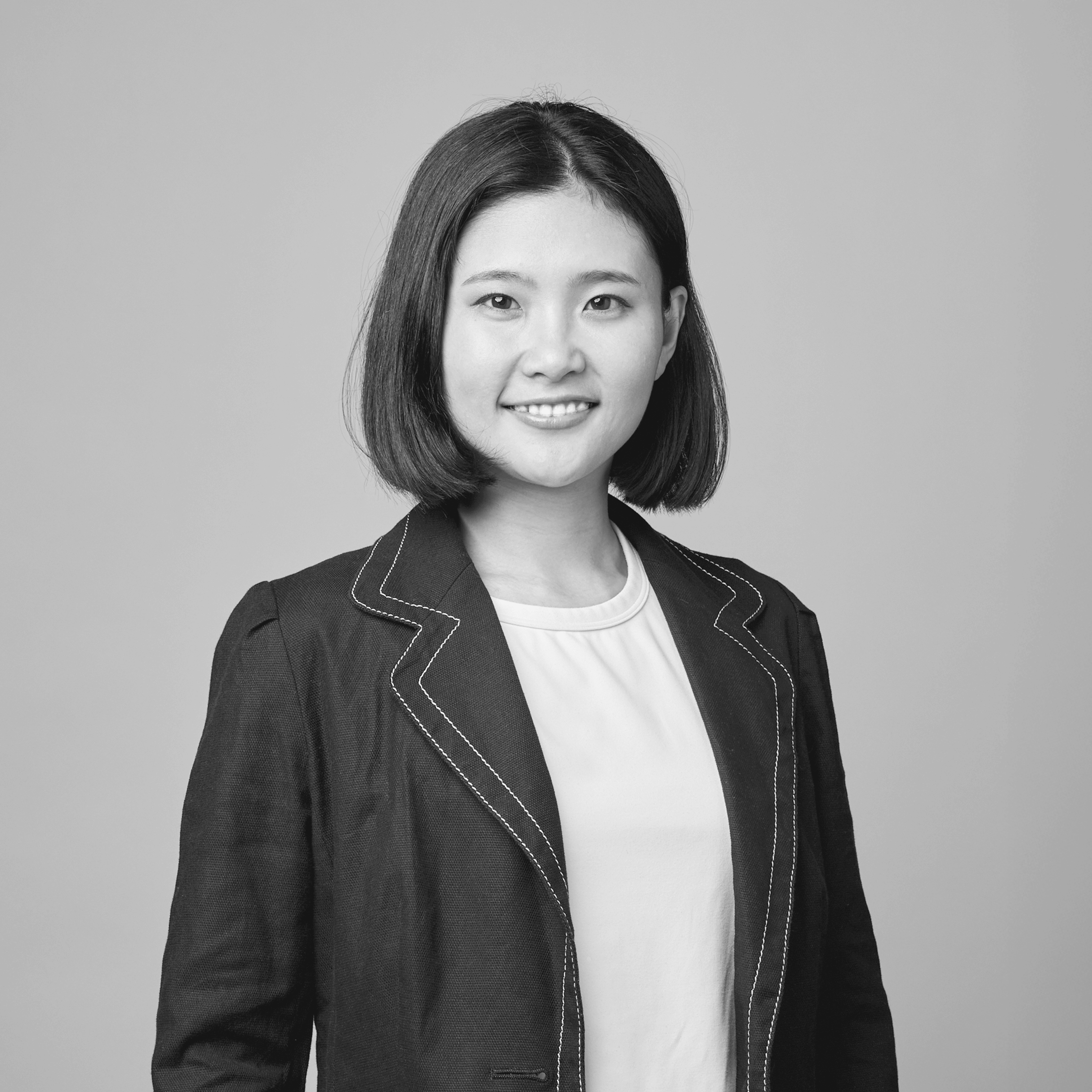
Experienced in B2B SaaS marketing and “omotenashi,” Natsumi directs media operations with a focus on hospitality and cultural storytelling. Her global experience and marketing skills bring fresh value to Bespoke Discovery’s content.


